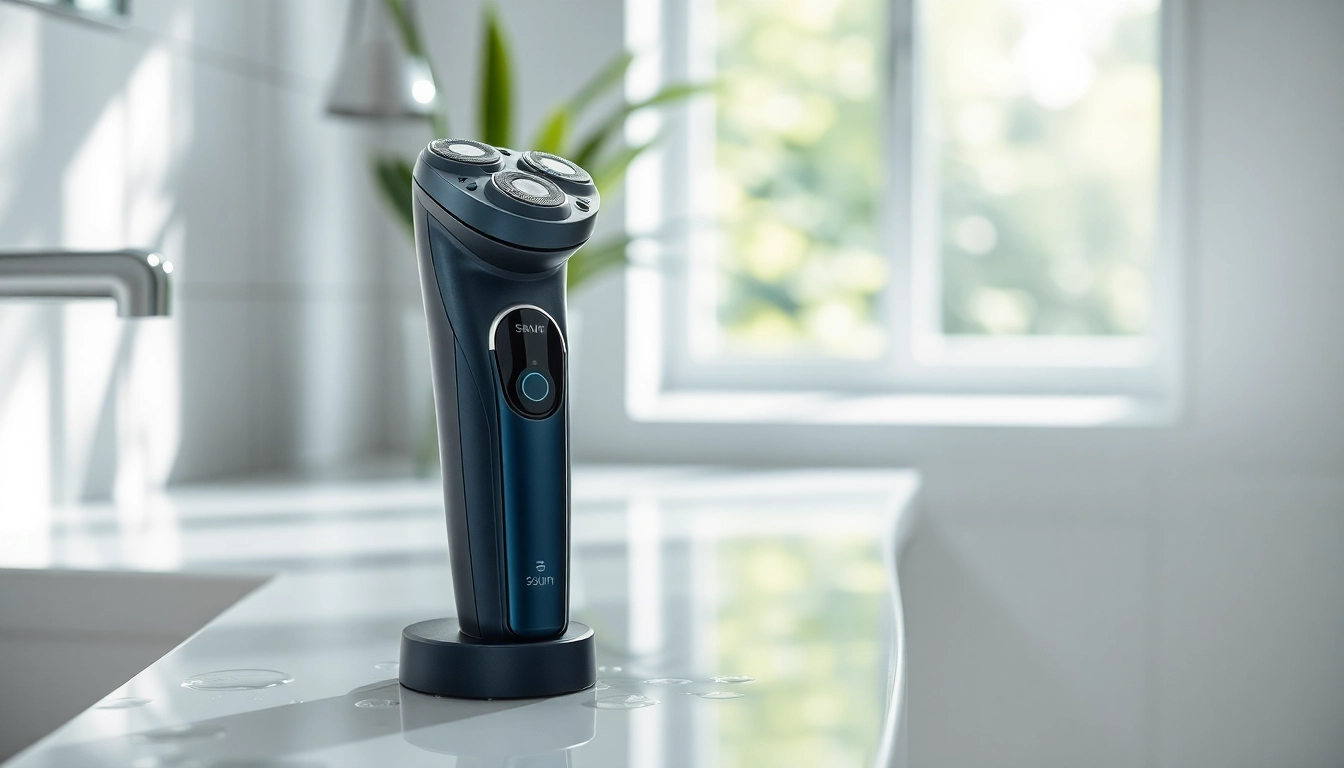The Best Electric Shaver for Sensitive Skin: Comfort and Precision Combined
Understanding Sensitive Skin and Shaving Needs
For many individuals, the quest for a perfect shave can be daunting, especially if they have sensitive skin. Shaving can often lead to irritation, redness, and discomfort, making it essential to choose the right tools and techniques. In this comprehensive guide, we will explore the importance of selecting an Electric Shaver for Sensitive Skin that caters to your unique skincare needs, ensuring comfort and precision.
What Causes Skin Sensitivity?
Skin sensitivity can arise from various factors, including genetics, environmental conditions, skin type, and personal grooming habits. Individuals with sensitive skin often experience reactions such as:
- Redness and inflammation
- Itching or burning sensation
- Dryness and flakiness
- Razor burn or bumps
- Allergic reactions to certain products
Understanding the root causes of these issues can help in making informed choices regarding shaving products and techniques.
Benefits of Choosing an Electric Shaver for Sensitive Skin
Opting for an electric shaver can provide numerous benefits for individuals with sensitive skin:
- Reduced Skin Irritation: Electric shavers can minimize nicks and cuts, which are common with traditional razors. This helps in reducing the risk of irritation.
- Speed and Convenience: Electric shavers allow for a quicker grooming routine, making it easier to maintain facial hair without extensive preparation.
- Versatility: Many electric shavers are designed for both wet and dry shaving, offering flexibility in how you choose to shave.
- Built-in Comfort Features: Electric shavers often come equipped with features such as pivoting heads and skin guard technologies that protect sensitive areas.
Key Features to Look For in Electric Shavers
When selecting an electric shaver for sensitive skin, it’s crucial to consider specific features that enhance the shaving experience:
- Hypoallergenic Blades: Look for shavers with blades that are designed to minimize irritation and are safe for sensitive skin.
- Adjustable Settings: Having customizable speed and power settings allows users to tailor their shave according to their skin’s tolerance.
- Ergonomic Design: A comfortable grip and design can significantly impact the overall shaving experience, making it easier to maneuver around facial contours.
- Cleaning and Maintenance: Shavers that offer easy cleaning processes, whether through rinseable designs or self-cleaning stations, can help maintain hygiene and performance.
Top Features of Electric Shavers for Sensitive Skin
Blade Technology and Design Considerations
Understanding different blade technologies is essential for anyone seeking an effective electric shaver for sensitive skin:
Modern electric shavers often utilize advanced blade technology such as:
- Triple Blade Systems: Offer a closer and smoother shave by using multiple blades working in conjunction.
- Rotary vs. Foil System: Rotary shavers are ideal for longer hair, while foil shavers provide a closer shave for daily hair removal.
- Skin Protective Coatings: Some blades come with specialized coatings that create a barrier between the skin and blade, reducing friction.
Flexible Heads and Their Importance
The flexibility of the shaving head is a critical feature for sensitive skin as it allows for better contouring to the face:
Shavers with flexible heads adapt to the curves of the face, enabling contact with the skin with minimum pressure and reducing the chances of nicking or cutting. This is especially beneficial in sensitive areas such as the neck and jawline.
Skin-Friendly Materials: What to Choose?
When shopping for an electric shaver, the materials used in the construction can greatly impact skin health:
Opt for shavers with:
- Stainless Steel: Durable, easy to clean, and often hypoallergenic.
- Plastic Components: Ensure they are BPA-free and designed to withstand wear while being gentle on the skin.
- Comfort Rings: Some shavers incorporate comfort rings that help glide the shaver across the skin, reducing irritation.
Evaluating Popular Electric Shavers on the Market
Performance Ratings and User Feedback
To choose the best electric shaver for sensitive skin, evaluating performance ratings and user feedback is crucial. Online reviews, testimonials, and product ratings can provide insights into real-world usage:
Features to focus on include:
- Sensitivity Levels: How well the shaver handles sensitive skin without causing irritation.
- Battery Life: The longevity and efficiency of the shaver’s battery can significantly affect its usability.
- Shaving Capabilities: Feedback on how effectively the shaver tackles different hair textures and growth patterns.
Comparative Insights on Pricing and Value
While price points vary widely, it’s essential to consider both quality and affordability. Shavers with advanced features may come at a higher price but often provide better comfort and longevity:
It’s wise to set a budget while prioritizing features that truly enhance your shaving experience, particularly if you have sensitive skin.
Top 3 Electric Shaver Recommendations
Here are indepth looks at three exemplary electric shavers known for their performance for sensitive skin:
- 3-Blade Shaver: Features multiple blades designed to provide a close shave without causing irritation.
- High-Speed Linear Motor: Ensures consistent performance without pulling hair, which can be crucial for sensitive skin users.
- Washable Design: Easier maintenance leads to better hygiene, benefiting those prone to skin reactions.
Tips for Using an Electric Shaver Effectively
Pre-Shave Preparation for Sensitive Skin
Preparing your skin properly can make a significant difference when shaving, especially for those with sensitive skin:
- Exfoliation: Gently exfoliating the skin removes dead skin cells and reduces the risk of ingrown hairs.
- Moisturizing: Applying a soothing moisturizer or pre-shave lotion can help hydrate the skin and improve gliding during the shave.
- Warm-Up: Using warm water or a warm towel can soften the hair, making it easier to shave with less irritation.
Best Practices for Daily Maintenance
To maintain the longevity and performance of your electric shaver:
- Regular Cleaning: Rinse the shaver head after each use to remove hair and skin debris.
- Blade Maintenance: Keep blades lubricated as per manufacturer recommendations to avoid dulling and tugging.
- Battery Care: Charge the shaver fully before use and never let the battery deplete completely to extend its lifespan.
Post-Shave Care: Keeping Your Skin Healthy
After shaving, it’s vital to adopt a post-shave routine that promotes skin health:
- Cool Compress: Applying a cool compress can soothe the skin and reduce redness.
- Toner or Aftershave: Using a gentle toner or alcohol-free aftershave can help balance the skin’s pH and close pores.
- Moisturizer: Finish off with a soothing moisturizer to lock in hydration and protect the skin barrier.
Troubleshooting Common Issues with Electric Shavers
Identifying and Solving Skin Irritation Problems
It’s common to encounter irritation when using electric shavers, particularly on sensitive skin. Recognizing the cause and adjusting your techniques can help:
- Razor Burn: This can often result from using a dull blade. Regularly replacing blades can mitigate this issue.
- Ingrown Hairs: Exfoliating before shaving and avoiding pressing too hard can help reduce the chances of ingrown hairs.
- Allergic Reactions: If skin irritation persists, it may be worth checking the ingredients of your shaving products and ensuring they’re skin-friendly.
When to Replace Blades for Optimal Performance
To maintain optimal performance of your electric shaver, knowing when to replace blades is crucial:
Typically, blades should be replaced every six months to a year, but this may vary based on usage. Signs that blades need replacement include:
- Increased tugging or pulling of hair.
- Occasional nicks or cuts during shaving.
- Visible damage or dullness on blades.
Dealing with Overheating During Shaving
If your electric shaver heats up during use, it could be a sign of an underlying issue:
- Check for Clogs: Hair buildup can block airflow and cause overheating. Regular cleaning is essential.
- Battery Issues: Older batteries may struggle to power shavers efficiently. Consider checking the battery or the entire unit for replacement.
- Using the Right Technique: Shaving too aggressively can generate more friction and heat. Always use gentle strokes and moderate pressure.














Post Comment